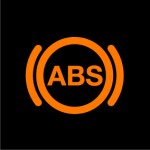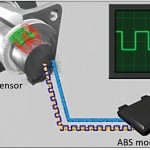Dan’s Diagnostics Weekly Round-Up
This week I was asked to activate the BC trip computer on a 62 plate Vauxhall Antara Exclusive.
The BC (board computer) button when pressed displays ‘no function’. When activated it displays trip information such as distance to empty, average speed etc. As an Exclusive model the sensors required were already fitted, however the function had possibly been deactivated by Vauxhall to separate it from a more expensive model.
I reprogrammed it using our Vauxhall software and the customer was happy that the functions were re-activated.
I also looked at a Ford Transit Connect for a customer who had been kindly sent to us from a garage that I have done work for in the past. It had an ABS light on with a permanent fault code for the right rear wheel speed sensor input circuit, failing it’s MOT.
The garage had carried out some tests, swapped the rear sensors around and removed the hub to check the reluctor (pickup) ring but been unable to locate the fault.
Previously ABS sensors were inductive and create their own AC signal voltage when they pass the reluctor. Because of this they need to see a certain rotation speed before the signal becomes reliable and can be interpreted by the ABS ECU. This means the ABS cannot be controlled at low speed.
With the newer type active sensors, the sensor is supplied with a voltage and creates a DC signal which the ABS ECU can accurately use to measure from 0mph and on some systems, direction of rotation. Some BMWs for example can use an ABS sensor to measure wheel speed, direction of rotation and even tyre pressure deviation!
No signal was produced by the sensor on the oscilloscope, but the supply voltage was present. We know it is not a sensor fault as the sensor worked on the other side. The sensor requires both a supply voltage and an earth to be ‘active’. The earth at the sensor was very poor and so the next step was to make sure the wiring was ok from the ABS ECU to the sensor. As a quick test I bypassed the wire with a separate wire and the sensor was still not operational. From this I was pretty confident the ABS ECU was not supplying a good earth to the sensor. I knew the earth supplies to the ABS ECU were ok as I had already tested them and besides, the other sensors were working. I applied an earth to the ECU pin that supplies the sensor and the sensor became active and a wheel speed was seen on the diagnostic tool. The fault code could also be deleted. This confirmed an ABS ECU fault.
I always think it’s good to reflect on the job and see if there was something I could have done to come to a conclusion quicker next time. In this case, I could have skipped the wire bypass and applied an earth to the pin straight away, as this would have proven the wire integrity. If the sensor then had not become active I could have bypassed the wire to test it.
Sometimes with diagnostics you have several paths you can take and without knowing the fault, you may find it straight away or it could be the final test you perform. The important thing is that every test yields useful information and either proves or disproves a possible fault.
You can be sure next time I will skip the step and it will be a wiring fault!



 D5 Creation
D5 Creation